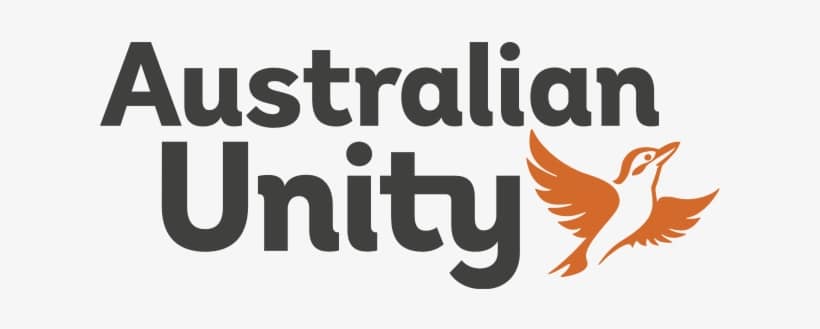Why compare health insurance policies through Savvy?
100% free service
There's no need for you to pay a cent to compare a variety of competitive policies side-by-side in one place.
Compare policies online
You can consider the inclusions, premiums, benefits and other key factors easily online, whether you're at home or on the go.
Trusted partners
We're partnered with Compare Club to help our customers lock in the best deal tailored to their needs.
Brands you can compare with us



We’ve partnered with Compare Club to bring you a range of health insurance policies to compare side by side.
Are you wondering if a silver health insurance policy is the right level of health insurance for your needs? It may offer the best health insurance cover available in Australia to a wide range of people, but it’s worth comparing different policies to help you determine which is most suitable for your personal needs.
You can compare silver hospital cover plans through Savvy, looking at the cover they offer, the prices, inclusions and more. Just by answering a few simple questions about the cover you’re after, you can compare a range of policies from a panel of leading providers. Get started with your health insurance quotes through us today.
What is silver health insurance and how does it work?
Private health insurance in Australia is divided into two basic types: hospital cover and extras cover. While extras cover helps with the cost of non-Medicare funded healthcare in the community, such as dental and optical, hospital cover assists with the costs of being treated as a private patient in hospital.
Hospital cover is divided into four levels or tiers: basic, bronze, silver and gold. A silver tier hospital policy offers the second-highest level of health cover available, below that offered by a gold policy. It provides financial assistance for many of the costs of admission into hospital as a private patient and offers rebates on a wide range of clinical categories.
A silver health insurance plan will cover many of the costs of being treated as a private patient in either a private or public hospital. These costs may include:
- Hospital admission and room fees
- Consultations with doctors, specialists and anaesthetists
- Tests administered prior to surgery or post-op in hospital, such as x-rays, CT and MRI scans
- The cost of surgery or other treatments received as an inpatient including theatre fees
- The cost of medications and pharmaceuticals given to a private patient
- Specified allied health services such as psychiatrists, psychologists, nutritionists and pain management specialists who deliver their services to you as an inpatient
- Possibly may include ambulance cover, although this will depend on the state you live in, and which fund you buy from
What are silver plus policies?
If a particular policy offers additional cover than that required by law, it is called a ‘plus’ policy. For instance, if a silver policy offered certain clinical categories which were ordinarily provided by a gold policy, an insurer may call this a ‘silver plus’ policy. The price of each level of health insurance policy generally rises as the number of clinical categories that are covered by the policy increases.
What clinical treatment categories does silver hospital insurance cover?
The treatments that are covered at each tier are regulated by the Australian Government, so particular areas of treatment have to be offered with each level of cover. For example, a silver hospital cover policy is required to offer all the categories provided under basic and bronze cover, as well as a list of new, silver-specific categories, as a minimum (at least 29 clinical categories). This makes it easy for Aussies to compare health insurance policies to find the best silver plan for their personal needs.
When it comes to the areas included under silver hospital cover, they begin with those provided by the cheapest tier of hospital insurance, basic hospital cover. These are:
- Rehabilitation
- Hospital psychiatric services
- Palliative care
Next comes a bronze policy, which adds another 18 clinical categories, including:
- Brain and nervous system
- Eye (not cataracts)
- Ear, nose and throat
- Tonsils, adenoids and grommets
- Bone, joint and muscle
- Joint reconstructions
- Kidney and bladder
- Male reproductive system
- Digestive system
- Hernia and appendix
- Gastrointestinal endoscopy
- Gynaecology
- Miscarriage and termination of pregnancy
- Chemotherapy, radiotherapy and immunotherapy for cancer
- Pain management
- Skin
- Breast surgery (medically necessary)
- Diabetes management (excluding insulin pumps)
As mentioned, a silver hospital cover health insurance policy offers cover for a minimum of 29 clinical categories, including all those at basic and bronze level. The following clinical areas are required to be offered at silver level only:
- Heart and vascular system
- Lung and chest
- Blood
- Back, neck and spine
- Plastic and reconstructive surgery (medically necessary)
- Dental surgery
- Podiatric surgery
- Implantation of hearing devices
How do I compare silver health cover policies?
Even though all silver health insurance policies offer cover for the same clinical categories, there are still many differences in the policies on offer. To compare silver hospital policies, look at the following aspects:
- Cost – there is a wide variation in the cost of silver policies, as some offer just the basic clinical categories, while other silver plus policies may add on additional coverage that is usually only found in gold policies, making them more expensive
- Excess – an excess is the amount you may have to pay if you make a claim on your hospital insurance policy. It can range from zero to a maximum of $750. Compare whether there is a yearly policy limit on the excess you may have to pay if you require multiple hospital stays.
- Co-payments – this is another out-of-pocket payment you may have to make if you do have a hospital stay. Co-payments range from zero to $100 a night.
- Inclusions and exclusions – each policy will come with product information documents which will detail what is and isn’t included in your policy. It’s worth reading these documents carefully before buying a health insurance policy so you can know what you can be covered for.
- Special offers – it's worth comparing health insurance policies through Savvy regularly, as some health funds occasionally advertise special offers to attract new customers. These may include free weeks’ coverage (provided you meet payment requirements as set out by your insurer).






